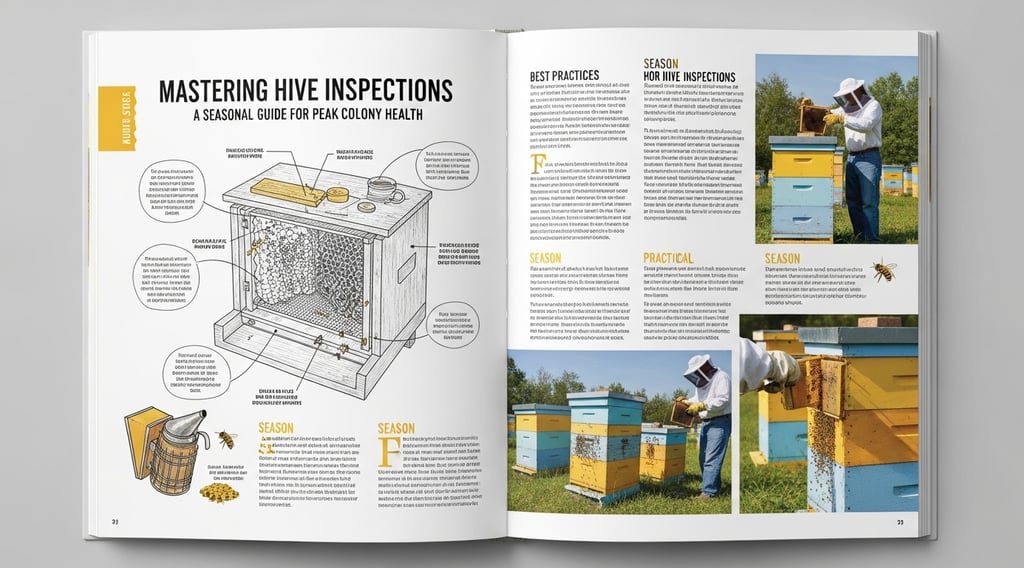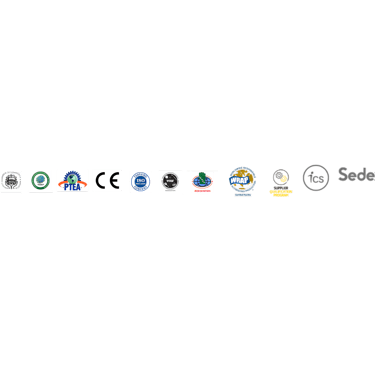Mastering Hive Inspections: A Seasonal Guide for Peak Colony Health
Regular hive inspections form the backbone of successful beekeeping.


Introduction
Regular hive inspections form the backbone of successful beekeeping. Whether you manage a handful of backyard hives or operate a commercial apiary, timely inspections help you detect early signs of disease, assess colony strength, monitor food stores, and plan interventions before problems escalate.
At Heliotrope Bee, we’ve spent over a decade supplying premium protective gear and inspection tools for beekeepers worldwide. This comprehensive seasonal guide combines science-backed strategies with practical field tips, ensuring your colonies stay healthy, productive, and resilient year-round.
Why Inspections Matter
Think of your hive as a complex, living city. Inside, thousands of bees work in synchrony — but environmental pressures, pests, and diseases constantly threaten this balance.
Through routine inspections, you:
Verify queen vitality and egg laying
Check brood pattern and colony population
Spot signs of disease or pest infestations
Manage food reserves and supplemental feeding
Plan timely treatments or splits
Prevent swarming during peak buildup
Heliotrope Bee’s protective suits, gloves, and veils make these inspections stress-free and safe, even for beginners.
Understanding Inspection Frequency
General Rule:
Inspect every 7–10 days during peak season. In cooler months or during heavy nectar flows, inspections can be less frequent to avoid unnecessary disturbance.
Key factors influencing frequency:
Weather conditions
Local pest/disease pressures
Colony strength and temperament
Time of year
🔍 Seasonal Breakdown: What to Check and When
🐝 Spring Inspections: Building Momentum
Goal:
Assess winter survival and prepare colonies for population growth.
Checklist:
Verify the queen: Look for fresh eggs and a solid brood pattern.
Estimate colony size: Strong clusters indicate healthy wintering.
Check for leftover honey stores: Feed sugar syrup or pollen patties if reserves are low.
Inspect for diseases: American Foulbrood (AFB), European Foulbrood (EFB), and Nosema should be ruled out.
Evaluate hive condition: Repair or replace damaged frames, boxes, or lids.
Pro Tip:
Use Heliotrope Bee’s lightweight ventilated suits for spring inspections — they keep you cool during unpredictable spring weather.
🌼 Early Summer: Swarm Control & Peak Health
Goal:
Prevent swarming, manage expanding colonies, and maintain robust brood production.
Checklist:
Inspect brood chambers weekly: Add supers if brood nest becomes congested.
Watch for queen cells: Early removal can deter swarming.
Confirm good egg laying and healthy larvae.
Monitor Varroa mite levels: Use sugar rolls or alcohol washes to determine if treatment thresholds are met.
Observe for signs of chalkbrood or other stress-related conditions.
Tip:
Have extra equipment ready. If a colony shows signs of swarming, perform a split to manage space and keep your bees productive.
☀️ Late Summer: Harvest and Health Checks
Goal:
Maximize honey harvest while maintaining colony strength for winter preparation.
Checklist:
Harvest capped honey frames, leaving sufficient stores for bees.
Inspect for diseases: Varroa levels peak late summer; treat promptly if needed.
Reduce entrances if robbing behavior appears.
Check ventilation and shade — hives can overheat in intense sun.
Heliotrope Bee Tip:
Our premium smokers and hive tools make harvesting smoother and safer for you and your bees.
🍂 Fall: Preparing for the Cold
Goal:
Strengthen colonies for overwintering.
Checklist:
Ensure the queen is still present and laying enough brood.
Confirm ample food stores: On average, 60–80 pounds of honey per hive is recommended for temperate zones.
Treat for mites: Fall treatments are crucial for healthy winter bees.
Reduce hive entrances to deter pests like mice and robbers.
Install mouse guards if needed.
Expert Note:
Heliotrope Bee’s durable entrance reducers and mouse guards protect your hives through harsh winters.
❄️ Winter: Minimal Disturbance
Goal:
Let bees cluster undisturbed while you monitor from the outside.
Checklist:
Periodically check for signs of moisture or blocked entrances.
Gently tap hives or use a stethoscope to ensure clusters are alive.
Provide emergency feed (fondant or sugar bricks) if stores run low.
Avoid opening the hive in freezing temperatures.
🧰 Pro Tips for Efficient Inspections
✅ Work Calmly:
Quick, jerky movements agitate bees. Move methodically to avoid crushing bees or the queen.
✅ Record Observations:
Keep a log of each hive’s condition — queen status, brood pattern, pest levels, and treatments applied. This data guides future decisions.
✅ Use the Right Tools:
A smoker, quality hive tool, frame grip, and bee brush make inspections smooth and reduce stress for both you and your bees.
✅ Wear Reliable Protection:
Heliotrope Bee’s suits and gloves are engineered for durability, breathability, and full range of motion, ensuring safety and comfort all season.
🔑 Why Trust Heliotrope Bee
As the largest manufacturer and supplier of beekeeping supplies, Heliotrope Bee combines decades of field experience with cutting-edge design to produce suits, gloves, smokers, hive tools, feeders, and more — trusted by beekeepers in over 50 countries.
From backyard hobbyists to commercial honey producers, our customers rely on us for:
Consistently high-quality gear
Custom branding options
Tailored manufacturing for specific climate and pest conditions
Expert advice and reliable delivery
Conclusion
Mastering hive inspections is an art honed over seasons. By following a seasonal routine and equipping yourself with top-quality tools and protective gear, you ensure your colonies remain healthy, productive, and resilient — no matter what nature throws your way.
When you invest in reliable equipment from Heliotrope Bee, you invest in your bees’ future and your peace of mind.
📧 Contact Us Today: sales@heliotropebee.com
🌐 Explore the Full Range: www.heliotropebee.com


